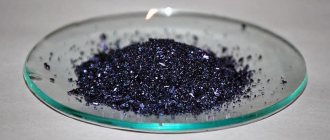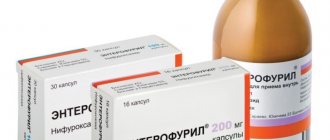An integral component of nutrition for adults and children, applicable in a regular diet is cottage cheese. The richness of the product, contained in protein and calcium, has a beneficial effect on the growth and development of the body.
Fermented milk products, including cottage cheese, are easily absorbed by the body. It is recommended to use it in the diet starting from six months of age. It is difficult for people with problems with the musculoskeletal system to do without cottage cheese: the product contains calcium and phosphorus, and a number of other microelements, without which the development process is impossible.
Despite its usefulness, cottage cheese is included in the line of perishable goods, and accordingly, there is a risk of poisoning. The reasons are external factors affecting the product.
Different types and their influence
There are several varieties of cottage cheese. All of them appeared depending on the needs of people and have different beneficial properties.
Grain cottage cheese - benefits and harm
Grainy or granular as it is called. It is a granular curd mass. It, just like low-fat, belongs to the dietary type. However, although it is low-fat, unlike low-fat, this type has much greater beneficial properties. The granular product contains a large amount of calcium, which has a positive effect on the nervous system.
The grained variety does not have any harmful properties as such. But if you eat it too often, you may experience an excess of calcium in the body.
When does failure occur?
The product becomes unfit for consumption if stored improperly if it is stored for more than four days at temperatures above 10 degrees Celsius. But even proper storage does not exclude the chance of poisoning, provided that the expiration date has expired.
The quality can also Failure to comply with all cooking features, improper heat treatment, quality of ingredients - these and many other factors can affect shelf life.
Don't forget about homemade cottage cheese. The situation with it is approximately the same as with low-quality industrial production; poisoning with it is also possible. It is only aggravated by the human factor. Making cottage cheese at home requires strictly using high-quality and fresh products.
This fermented milk product is very popular. Cottage cheese poisoning can be extremely dangerous for your health. Thanks to its structure and beneficial vitamins, it is an excellent food for both children and adults. Also, some varieties are excellent food for diets. It is formed by exposing milk to high temperatures. During the heating process, pepsin and various starter cultures are added to the milk. The level of fat content depends on the duration of heat treatment. The longer the milk is heated, the less final fat content it has.
If you see a product that says 0%, then the manufacturer clearly wants to deceive you.
Each of us knows that there are many different dairy products, and one of the most famous is, of course, cottage cheese.
The beneficial properties of cottage cheese have been known for a very long time. The consumption of this particular dairy product brings great benefits to the human body.
Symptoms of cottage cheese poisoning
In case of cottage cheese poisoning, the symptoms usually appear quickly and rapidly:
- weakness - the patient is seized by a sharp causeless weakness throughout the body;
- sudden pain and cramps in the abdomen, acute, unbearable colic;
- nausea - begins unexpectedly, often accompanied by vomiting;
- diarrhea with pain;
- increased body temperature - the sick person quickly and suddenly feels feverish;
- temperature is accompanied by fever.
Often these symptoms are present in other types of poisoning, but with cottage cheese poisoning they appear quickly. Since poisoning and intoxication of the body always go hand in hand, if you have the slightest suspicion about cottage cheese poisoning, you need to start treatment immediately.
Examination of the patient
To prescribe the correct treatment and to identify possible complications from internal organs, the doctor prescribes an examination of the patient, which, in case of cottage cheese poisoning, consists of:
- general detailed blood test;
- general urinalysis;
- bacterial culture of stool;
- ultrasound examination of internal organs;
- biochemical blood test;
- electrocardiograms.
Is it possible to get poisoned by cottage cheese?
Cottage cheese has a beneficial effect on the human body, but can it cause food poisoning? Despite all the benefits of this wonderful product, there are several reasons why cottage cheese can still harm human health.
- Improper heat treatment can lead to poisoning, gastrointestinal disorders, and allergic reactions. When preparing dishes with cottage cheese purchased at the market, you need to observe the temperature regime and pay attention to its consistency (homemade cottage cheese should not be very wet and have an elastic consistency).
- An expired product is also dangerous for poisoning and disorders. Do not use expired product.
- Improper storage of the product can harm a person, even if the expiration date has not expired. You need to be most careful when consuming cottage cheese in the summer, since the bacteria in this product develop very quickly in the heat. It is necessary to remember that natural homemade cottage cheese is stored for only about 3 days. All curd products whose shelf life exceeds this mark contain preservatives or other chemicals that extend the shelf life of dairy products. You also need to pay attention to this, because if the amount of these substances is exceeded, the product is even more dangerous to human health.
We recommend reading: Kefir for gastritis: can you drink it, benefits and harm
Prevention
You can avoid cottage cheese poisoning in children and adults by following the basic rules:
- Pay attention to the appearance and organoleptic properties of the cottage cheese - fresh cottage cheese should be crumbly, white or yellowish, with a pleasant sour smell, without any impurities, sediment or inclusions. You should not buy “wet”, sour cottage cheese, a product with an unpleasant odor, greenish or yellow inclusions. Cottage cheese with mold or dark inclusions is dangerous.
- Do not forget about the rules of storage and preparation - in the warm season at room temperature, within a few hours pathogenic bacteria begin to multiply in the cottage cheese, which can cause poisoning.
- Do not consume products that have expired - fresh homemade cottage cheese can be stored for no more than 3 days in the refrigerator, prepared in production - no more than 5 days. The very next day after the expiration date, pathogenic microorganisms begin to actively multiply in the cottage cheese, which can cause intoxication. The main rule of prevention, which allows you to avoid poisoning from dairy products, butter and cottage cheese, is assessing the appearance and observing the expiration date of the product. Curd products are stored much longer, but their usefulness can be argued: they are made from raw milk with a large number of preservatives and additives.
- Purchase products only from trusted manufacturers - the most common cause of poisoning is failure to follow hygiene rules when preparing cottage cheese or using milk from sick animals. Therefore, it is better not to take risks and not to purchase cottage cheese prepared under unknown conditions.
Cottage cheese is a healthy product that must be included in the diet of children and adults. But do not forget that poisoning with curd mass or cottage cheese develops, as a rule, due to non-compliance with safety rules, due to the purchase of products of unknown quality.
Cottage cheese is a healthy product
If you choose among other dairy and lactic acid products, cottage cheese is the leader in the content of proteins, calcium, phosphorus and mineral proteins. Since it is very well absorbed, its use has no age restrictions.
You only need to pay attention to the fat content of the product, for example, low-fat is better suited for children (can be added to the diet of a 5-6 year old child), pregnant women and nursing mothers. Also, low-fat cottage cheese is indispensable during diets.
Each of us knows that there are many different dairy products, and one of the most famous is, of course, cottage cheese.
Cottage cheese poisoning can occur as a result of consuming a low-quality product. It is dangerous to buy a product from hand, since it is not known under what sanitary conditions it was prepared. Intoxication often occurs in the summer, since the air temperature is higher, the proliferation of bacteria accelerates.
Symptoms of cottage cheese poisoning
The beneficial properties of cottage cheese have long been known to everyone. The fermented milk product is used in the preparation of baby and dietary food. The curd mass is prepared from milk and sourdough; the fat content of the product ranges up to 23%, which affects the rate of its oxidation.
The advantage of cottage cheese is its high content of protein, calcium, phosphorus and other nutrients. Consumption of the product has a beneficial effect on the functioning of the body.
It can deteriorate if storage and preparation instructions are not followed. Can be stored for food consumption for up to 4 days at temperatures from +2°C to +6°C. Extend shelf life by placing in the freezer.
Symptoms of poisoning:
- weakness in the body,
- The body's defense reaction is nausea and vomiting. This is a sign that the stomach is ridding itself of harmful bacteria and toxins.
- the presence of cramps and intestinal colic, causing abdominal pain,
- frequent and severe diarrhea. Sometimes the stool is greenish, foamy, sometimes with bloody and mucous streaks,
- body temperature rises to 39°C,
- migraine, dizziness,
- the first symptoms of intoxication in children are the appearance of a rash on the body and poor appetite,
- against the background of poisoning and excessive loss of fluid from the body, a rapid heartbeat appears.
Dehydration occurs due to frequent diarrhea and vomiting. Deterioration of the condition is expressed by pale skin, rapid breathing, and a decrease in the amount of fluid released during urination.
How long will it take for it to appear?
Cottage cheese poisoning is similar in symptoms to intoxication with dairy products and manifests itself clearly. After consuming a spoiled product, the condition worsens within 10–30 minutes. The person feels nauseous, weak, and may experience dizziness. temperature rise.
The child’s body reacts more quickly to toxins and may experience severe vomiting. Eating cottage cheese in large quantities can cause stomach pain and heaviness. The higher the fat percentage, the more pronounced the symptoms will be.
First aid for cottage cheese intoxication
After discovering the causes of poisoning, first aid must be provided at home. You can resort to procedures at home:
- Rinse the stomach. This helps cleanse toxins and undigested food debris and prevent deterioration of the condition. You should drink a large amount of plain water in one gulp and induce vomiting. Gastric lavage is done in a conscious state. This procedure is prohibited for children under 3 years of age.
- Give a cleansing enema. Use regular boiled water in a warm form. You need to cleanse the intestines with an enema until the wash water comes out clear.
- Sorbents. Using sorbent preparations, you can have a detrimental effect on pathogenic microorganisms and toxins. Activated carbon, Atoxil, Sorbex, Smecta, Enterosgel are most often used.
- Provide plenty of fluids. After the gastric lavage procedure, you need to drink plenty of fluids to prevent dehydration. This will help speed up the process of treating intoxication. Warm black tea with sugar and alkaline mineral water is an essential liquid to combat dehydration.
Food intoxication during pregnancy requires emergency measures and emergency treatment. If signs of poisoning worsen, you should call an ambulance. There is a danger to the fetus.
Poisoning in childhood is more difficult. Parents should closely monitor their children for symptoms. If a child under three years of age is poisoned by cottage cheese, go to the hospital immediately.
What information is missing from the article?
- List of effective medications
- A detailed overview of traditional methods of treatment
- Professional opinion of a specialist
- Detailed review of antidotes
We recommend reading: Which bottles are best for feeding newborns - review
Possible consequences
The consequences of cottage cheese poisoning depend on the cause of poisoning (salmonellosis, shigellosis or other intestinal infection), the severity of intoxication and the treatment provided. With timely treatment, the patient does not have any unpleasant consequences. Severe poisoning can cause the development of dysbacteriosis, disruption of the intestines, stomach, pancreas, gall bladder or liver.
In the most severe cases, poisoning can cause dysfunction of the central nervous system.
When is cottage cheese useful and when can it be harmful?
Each of us has known about the beneficial properties of cottage cheese since childhood. But few of us know that this dairy product is a source of numerous intoxications.
We recommend reading: Ketanov overdose: signs, first aid, treatment
The risk of poisoning increases especially in the summer, since high temperatures create favorable conditions for the proliferation of pathogenic bacteria.
In case of cottage cheese poisoning, a set of measures is carried out aimed at destroying pathogenic bacteria and restoring the water-salt balance in the body.
Treatment
Upon arrival, doctors conduct a full examination and collect data. Primary mandatory measures consist of:
- Injections through a drip apparatus, the composition includes medications to relieve conditions of dehydration and intoxication.
- Medicines that relieve nausea, vomiting, pain.
- Face masks that supply oxygen.
- If gastric lavage is not done, the process is carried out by doctors.
When first aid measures have been carried out, the victim is taken to the hospital department, often the infectious diseases department, where a set of examination measures is carried out. Further treatment is prescribed.
The length of stay in the hospital depends on the pathogen that caused the poisoning.
Most patients are prescribed:
- Lie in bed, do not get overtired;
- The use of a certain drinking regime and diets;
- Rehydration treatment;
- Use of drugs with antibacterial effect;
- Fermentation;
- Antispasmodics.
They expand the scope of treatment measures when complications occur, such as gastritis, dysbacteriosis, etc.
Symptoms of cottage cheese intoxication
Symptoms of cottage cheese poisoning occur immediately after eating a low-quality product or several hours later. The first signs of poisoning are weakness, abdominal pain, nausea and vomiting. Then, depending on the type of poisoning - food poisoning, toxic infection, salmonellosis - other symptoms appear: fever, diarrhea or headache.
The main symptoms of cottage cheese poisoning appear quickly, especially if a child or elderly person is injured.
Poisoning can be suspected based on the following signs:
- weakness, general malaise;
- nausea and vomiting;
- increased body temperature;
- diarrhea;
- abdominal pain, colic;
- headache, dizziness.
With salmonellosis, the patient's stool will be liquid, greenish, foul-smelling, and foamy. Characterized by increased body temperature, fever and general malaise. Suspicion of this infection is always a reason to seek medical help, since it is very difficult to cope with pathogenic bacteria at home.
With shigellosis, the main manifestations of poisoning will be bloating and repeated loose stools.
Infection with pathogenic staphylococcus is manifested by severe weakness, nausea and diarrhea.
There are 3 degrees of severity of poisoning:
Basis of clinical manifestation
It is impossible to determine exactly when symptoms will appear due to differences in organisms. The approximate period is 3-10 hours from the moment of ingestion of low-quality cottage cheese. In a child, signs of poisoning may appear faster.
The main symptoms of cottage cheese poisoning:
- Noticeable physical weakening is the consequences of intoxication.
- Vomiting is an attempt to throw out toxins and bacteria of pathogenic etiology. Vomiting occurs many times. The vomit contains mucus, bile, food debris mixed with stomach juice.
- The location of intestinal spasms varies.
- Diarrhea can occur up to 25 times per day. Feces are greenish in color with foam, interspersed with blood and mucus.
- The temperature rise reaches 39 degrees.
- The head is spinning and pain occurs.
- The heart beats faster than usual. Breathing quickens. Symptoms occur due to dehydration.
- The skin changes, becoming pale and sagging.
- The volume of urine decreases sharply.
Specifics of the clinical picture
In case of cottage cheese poisoning, symptoms appear quite quickly, one might even say rapidly. This is due to the fact that signs of intoxication appear immediately after the cottage cheese penetrates the stomach cavity.
Clinical picture of cottage cheese poisoning:
- nausea and vomiting;
- severe weakness, lethargy and malaise;
- spasms, colic and cramping pain in the abdomen;
- increased body temperature;
- drop in blood pressure;
- diarrhea;
- headache;
- heaviness in the abdomen and flatulence.
Cottage cheese poisoning
An integral component of nutrition for adults and children, applicable in a regular diet is cottage cheese. The richness of the product, contained in protein and calcium, has a beneficial effect on the growth and development of the body.
Fermented milk products, including cottage cheese, are easily absorbed by the body. It is recommended to use it in the diet starting from six months of age. It is difficult for people with problems with the musculoskeletal system to do without cottage cheese: the product contains calcium and phosphorus, and a number of other microelements, without which the development process is impossible.
Despite its usefulness, cottage cheese is included in the line of perishable goods, and accordingly, there is a risk of poisoning. The reasons are external factors affecting the product.










